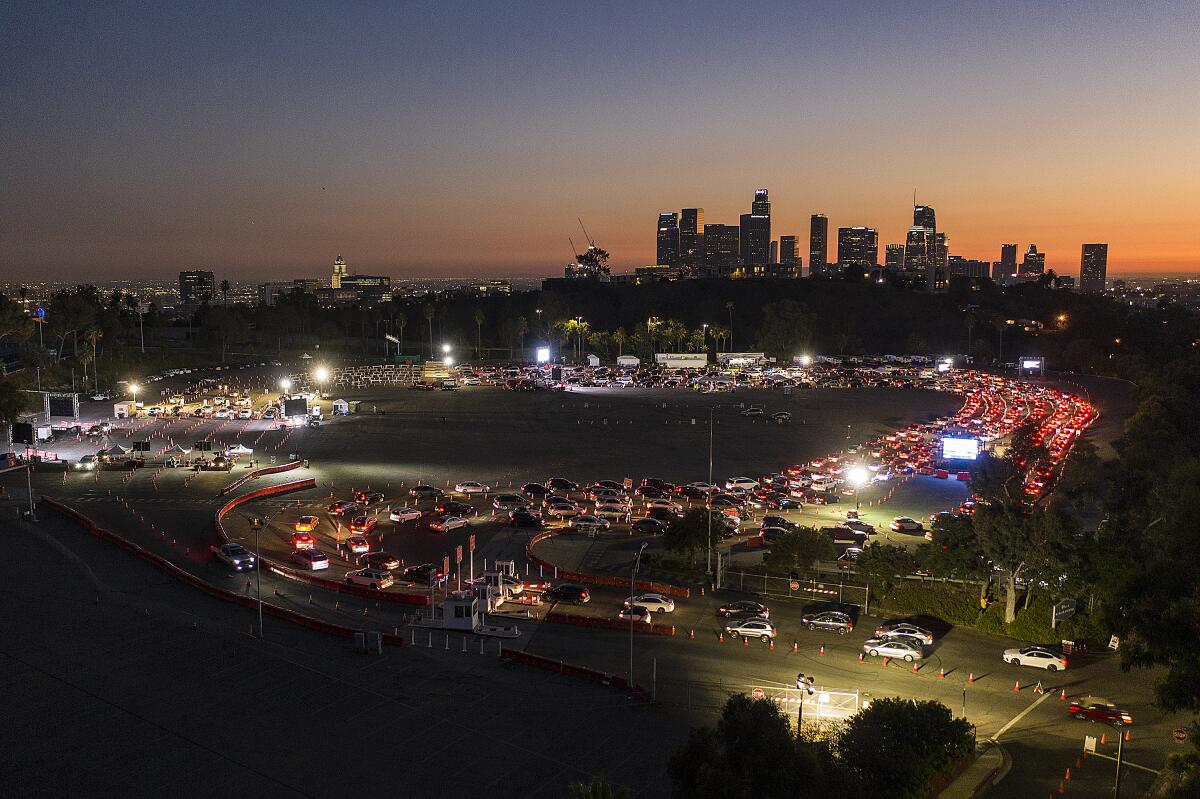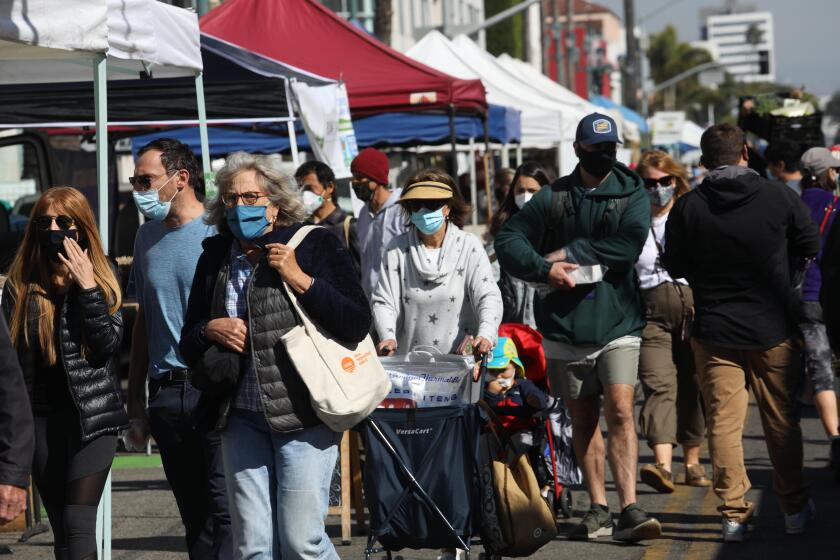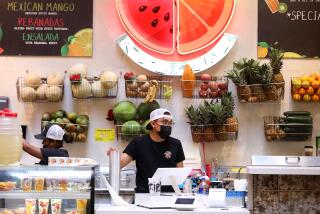Some in L.A. are getting COVID-19 tests so they can party, socialize. Officials call this a disaster

- Share via
Desperately seeking to find a seemingly responsible way to hold dinner parties, some people have started to get tests for the coronavirus as a way to clear themselves to attend dinner parties without needing to wear masks or keep their distance.
That’s absolutely the wrong thing to do, according to Barbara Ferrer, Los Angeles County’s director of public health.
Ferrer said on Monday that she has heard of groups of young adults going to get tested for the coronavirus on a Thursday in hopes of getting the negative results by Saturday morning, and then having a dinner party on Saturday night.
But such tests provide a false sense of security — and engaging in this practice can still result in the dinner party becoming a super-spreading event that can transmit the highly contagious virus widely.
“That’s actually a false sense of security. It’s a false narrative,” Ferrer said.
“Your test result that you got Saturday morning was from Thursday when you got tested, and it said, ‘On Thursday, you were negative,’” Ferrer said. “It says nothing about whether you’re still negative on Saturday.
Officials are sounding the alarm about the rapid spread of the coronavirus and have warned that more restrictions could come, even a possible curfew.
“I do want people to understand that testing on Thursday so you can party on Saturday: That doesn’t work. It’s not a good idea. It’s not effective and you really are in some ways wasting a valuable resource,” Ferrer said.
Tests can provide misleading results.
If a person is tested shortly after becoming infected but before the virus has reproduced enough copies of itself, a test could fail to detect the virus and produce a false negative result.
It’s also possible that a person can be exposed to the virus just after getting a test on a Thursday and be contagious by the time the party is held on a Saturday.
A large percentage of people can get infected with the coronavirus, be highly contagious but never show symptoms of illness.
There has been a jump in coronavirus cases among all age groups in L.A. County, but the rise is particularly “alarming” among young adults, who are driving the spread of the pandemic in the nation’s most populous county, Ferrer said.
Adults ages 18 to 29 comprise the largest proportion of newly diagnosed coronavirus cases in L.A. County.
In the last month, the case rate for residents of L.A. County ages 18 to 29 has more than doubled, from 11.5 cases per 100,000 residents in this age group to 25 cases per 100,000 residents in this age group.
The age group with the second-highest case rate are adults ages 30 to 45, which have nearly doubled over the last month, from 9.4 cases per 100,000 residents in this age group to 18 cases per 100,000 residents in this age group.
“And although this rate of increase is not as sharp as that for our younger age group, it is still quite alarming,” Ferrer said.
Los Angeles County reported more than 3,000 new infections on both Saturday and Sunday; the 3,780 cases on Saturday represented the highest one-day total since mid-July.
Even on Monday, when case counts are typically lower because of reporting lags over the weekend, officials announced 2,795 new cases.
“It is clear that L.A. County is at a very dangerous point in the pandemic,” Ferrer said.
As the case count swells, officials emphasize that it’s essential for residents to follow infection-prevention protocols: Wear a mask in public, wash hands regularly, stay home when sick and keep a physical distance from, and avoiding gathering with, those outside your household.
None of those are novel concepts in the battle against the novel coronavirus. As Ferrer put it, “This isn’t like we don’t know what to do. This is about getting back to doing what works.
“As a community and as individuals, we’re going to need to be laser-focused on reducing transmission,” she said during a briefing. “To say many lives are at stake is not an exaggeration.”
As cases explode, Los Angeles County officials have discussed several additional steps they can take. One idea is a set a curfew of some type designed to limit the time businesses are open and people are “mingling.” New York imposed a curfew last week on restaurants and bars beginning at 10 p.m. Only takeout orders are allowed after that.
Others include reducing occupancy levels at sites where people are indoors; dedicating more resources to ensuring businesses follow public health orders; and encouraging certain safety measures, such as telling everyone who can work from home to go back to doing so, Ferrer said.
More to Read
Sign up for Essential California
The most important California stories and recommendations in your inbox every morning.
You may occasionally receive promotional content from the Los Angeles Times.













